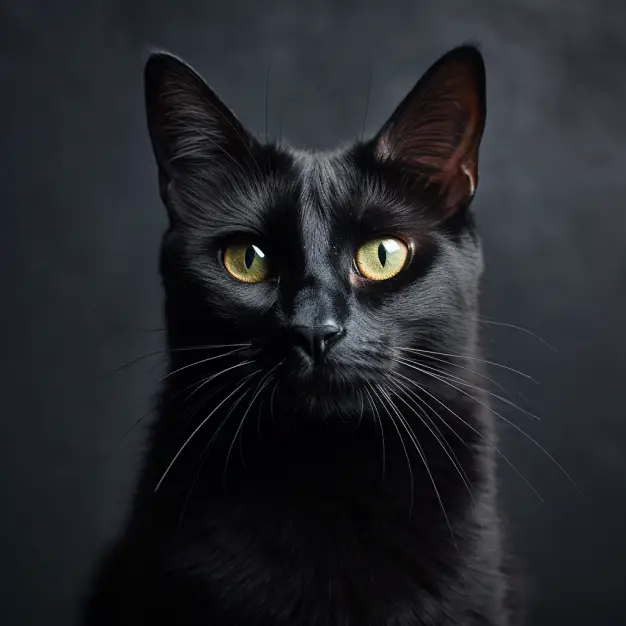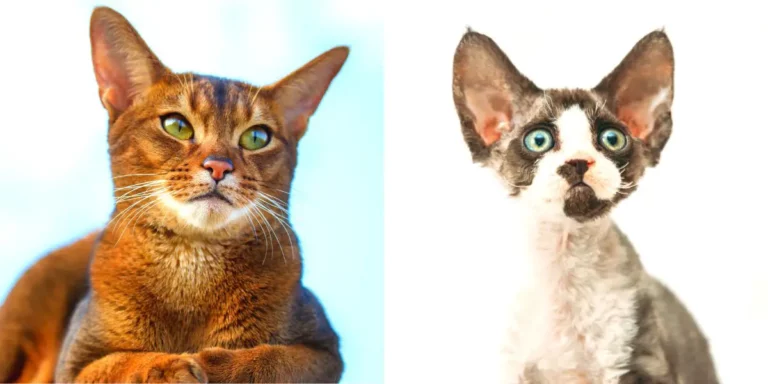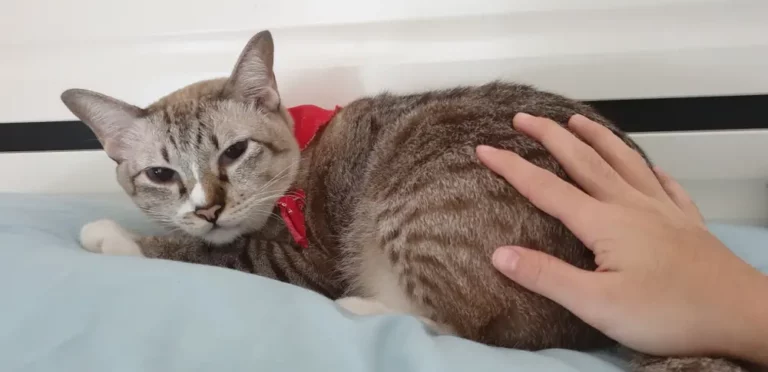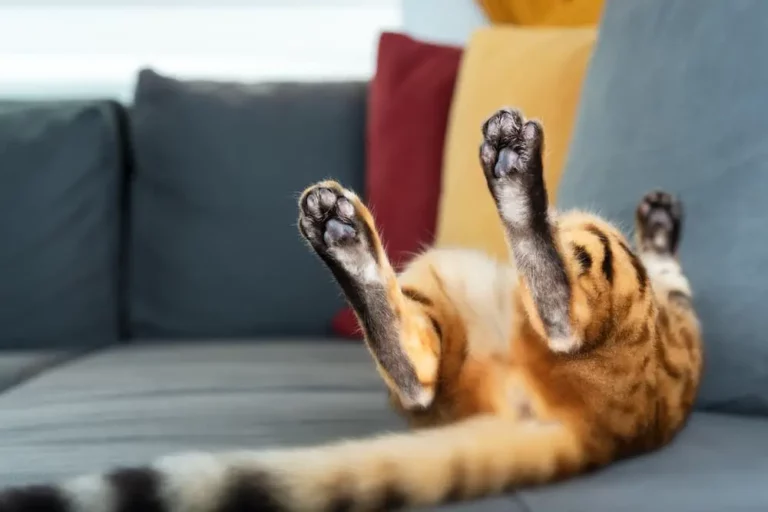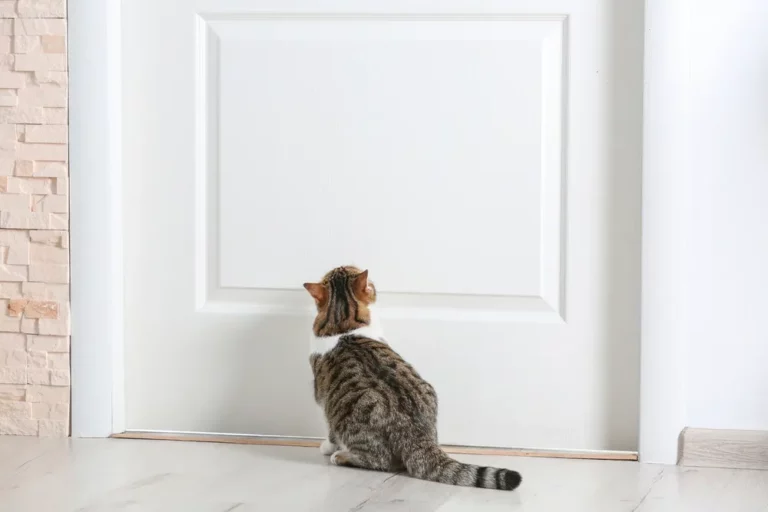Help! My Cat is Reverse Sneezing: A Guide for Cat Owners
It’s not unusual to hear a variety of sounds coming from our feline friends, but some noises can be quite alarming. One such peculiar sound is reverse sneezing in cats. While the name might sound intimidating, it’s actually a common occurrence in the feline world.
This guide will delve into what reverse sneezing is, what causes it, how it can be managed, and when it might be a cause for concern. So, let’s begin our journey into understanding this peculiar feline phenomenon better.
Key Insights At a Glance
- Reverse sneezing is a rapid inhalation through the nose often accompanied by snorting or gagging sounds.
- It’s generally considered a normal occurrence and is typically not a cause for concern.
- Common triggers include excitement, exercise, allergens, irritants, or a sudden change in temperature.
- Most episodes of reverse sneezing require no treatment and stop on their own.
- However, frequent or prolonged reverse sneezing could indicate an underlying health issue requiring veterinary attention.
- Always consult your vet if you’re concerned about your cat’s health and well-being.
What Is Reverse Sneezing in Cats?
Reverse sneezing is an intriguing phenomenon seen in our feline friends. Unlike the typical sneeze where air is forcefully pushed out through the nose, a reverse sneeze involves a rapid and forceful intake of air. This can result in a loud snorting, hacking, or gagging noise that can sound alarming if you’re not familiar with it.
It’s a relatively common occurrence in cats, but many owners may not recognize it for what it is. The reverse sneeze is named so because it appears as if the cat is rapidly inhaling sneezes instead of expelling them.
The act of reverse sneezing is actually the cat’s way of removing irritants from the nasal passages or the back of the throat. Just as regular sneezing is a method to clear the nasal passages, reverse sneezing is essentially the same reflex but in a different direction. It’s a natural protective mechanism to keep the respiratory tract clear.
In most cases, reverse sneezing doesn’t pose a significant problem for cats. It tends to be a sporadic event that stops as suddenly as it begins. However, it’s important to be aware of this behavior in your cat, as changes could signal an underlying health concern.
What Does Reverse Sneezing in Cats Sound Like?
Reverse sneezing in cats can manifest with a variety of sounds, which may initially cause alarm or confusion among pet owners. As the cat draws air in rapidly through the nose, it can produce a distinctive snorting, hacking, or gagging noise.
Some people describe it as a cat trying to ‘inhale a sneeze’, ‘cough up a hairball’, or ‘snore while awake’. It can even sound like choking or gasping for breath, but these are not accurate representations of what’s actually occurring.
An episode of reverse sneezing can last anywhere from a few seconds to a minute. During this time, your cat may stand still with its elbows spread apart, head extended forward, and eyes bulging as it makes these unusual noises.
It’s essential to familiarize yourself with these sounds and behaviors. By recognizing reverse sneezing when it occurs, you’ll be better prepared to monitor your cat’s health and determine if veterinary attention is needed.
The video below is a good illustration of what cat sneezing looks and sounds like.
Cat Reverse Sneezing Video
What Causes Reverse Sneezing in Cats?
The precise cause of reverse sneezing in cats can be challenging to pin down, as it often occurs without any identifiable trigger. However, veterinary experts suggest that certain factors may induce an episode. These include:
1. Irritation to the nasal, pharyngeal, or sinus areas: Anything that irritates these parts of a cat’s respiratory tract can potentially trigger reverse sneezing. This could be dust, pollen, household chemicals, perfumes, or even a sudden change in temperature or humidity.
2. Allergies: Cats can suffer from allergies just like humans. Exposure to allergens such as dust mites, pollen, or certain foods can result in inflammation of the upper airways, potentially leading to episodes of reverse sneezing.
3. Viral or bacterial infections: Infections in a cat’s upper respiratory tract can lead to reverse sneezing. These infections may cause inflammation or mucus production, which can prompt a cat to reverse sneeze as it attempts to clear its airways.
4. Nasal mites: These tiny parasites can live in a cat’s nasal passages and sinuses, irritating the lining and potentially causing reverse sneezing.
5. Anatomical abnormalities or foreign bodies: Any structural abnormalities in a cat’s respiratory tract, or the presence of a foreign body (like a blade of grass or a small toy), can trigger reverse sneezing.
Keep in mind that while these potential triggers can lead to reverse sneezing, many cases occur sporadically with no apparent cause. In these instances, the reverse sneezing is typically harmless and doesn’t indicate a serious health issue.
However, if you notice your cat frequently reverse sneezing or displaying other symptoms, it’s worth consulting your vet to rule out underlying medical conditions.
Cat Reverse Sneezing and Allergies
While allergies can affect different cats in various ways, they can indeed be a key player in causing episodes of reverse sneezing. Just like people, cats can be sensitive to environmental allergens such as dust, pollen, mold, or even certain ingredients in their food.
When a cat with allergies is exposed to an allergen, their body reacts by releasing histamines. These chemicals are part of the body’s defense mechanism against substances it perceives as harmful, even if they’re not actually dangerous. This reaction can result in inflammation in the nasal passages or throat, which can cause reverse sneezing as the cat tries to clear its airways.
If your cat is frequently reverse sneezing and also exhibits other signs of allergies – such as itching, redness, sneezing, coughing, runny eyes, or changes in appetite or behavior – an allergy could be the culprit. It’s also worth noting that allergic reactions can be seasonal or year-round, depending on what the cat is allergic to.
If you suspect allergies may be behind your cat’s reverse sneezing, it’s crucial to consult with your veterinarian. They can perform tests to identify the allergen and suggest treatments or management strategies to help your cat feel more comfortable.
These might include antihistamines, corticosteroids, or lifestyle changes like switching to hypoallergenic food or using air purifiers to reduce airborne allergens.
Recognizing the Signs of Reverse Sneezing
Recognizing the signs of reverse sneezing can help you understand when your cat might be experiencing this odd phenomenon. Cats can’t tell us when they’re feeling uncomfortable, so it’s up to us to interpret their behavior and body language to ensure they’re healthy.
Reverse sneezing often looks and sounds alarming if you’ve never seen it before. A typical reverse sneezing episode might involve your cat standing still with their elbows spread apart, extending their neck, and making rapid, forceful inhalations through the nose.
This might be accompanied by snorting or gagging noises and can last from a few seconds to a minute or so.
The cat might also seem distressed or anxious during the episode but will usually return to normal behavior once the episode has passed. It’s also worth noting that while reverse sneezing can occur at any time, it’s often more frequent when the cat is excited, eating, or just after waking up.
If you notice these signs, it’s worth recording an episode if possible. This can be very helpful when you consult with your vet, as the visual and auditory cues can provide them with valuable information to help determine the cause and the best course of action.
Is Reverse Sneezing Dangerous for Cats?
Reverse sneezing in itself is usually not harmful to cats. It is considered a natural reaction that helps clear the nasal passages. However, frequent reverse sneezing episodes could be a sign of underlying health issues that may need attention.
The body’s natural reflexes, like reverse sneezing, are designed to protect and cleanse the respiratory tract. This reflex can be triggered by irritants or inflammation in the nasal passages, throat, or sinuses. It’s not typically dangerous and doesn’t cause any long-term health issues for your feline companion.
But if your cat’s reverse sneezing becomes chronic or occurs alongside other symptoms like loss of appetite, lethargy, or difficulty breathing, it’s crucial to seek veterinary attention.
These could indicate more serious health concerns such as upper respiratory infections, nasal mites, or foreign bodies lodged in the throat or nasal passages.
As cat owners, we must monitor and understand our pets’ behaviors and consult a vet if something seems out of the ordinary. While reverse sneezing is generally not a cause for alarm, changes in its frequency, severity, or the presence of other symptoms should not be overlooked.
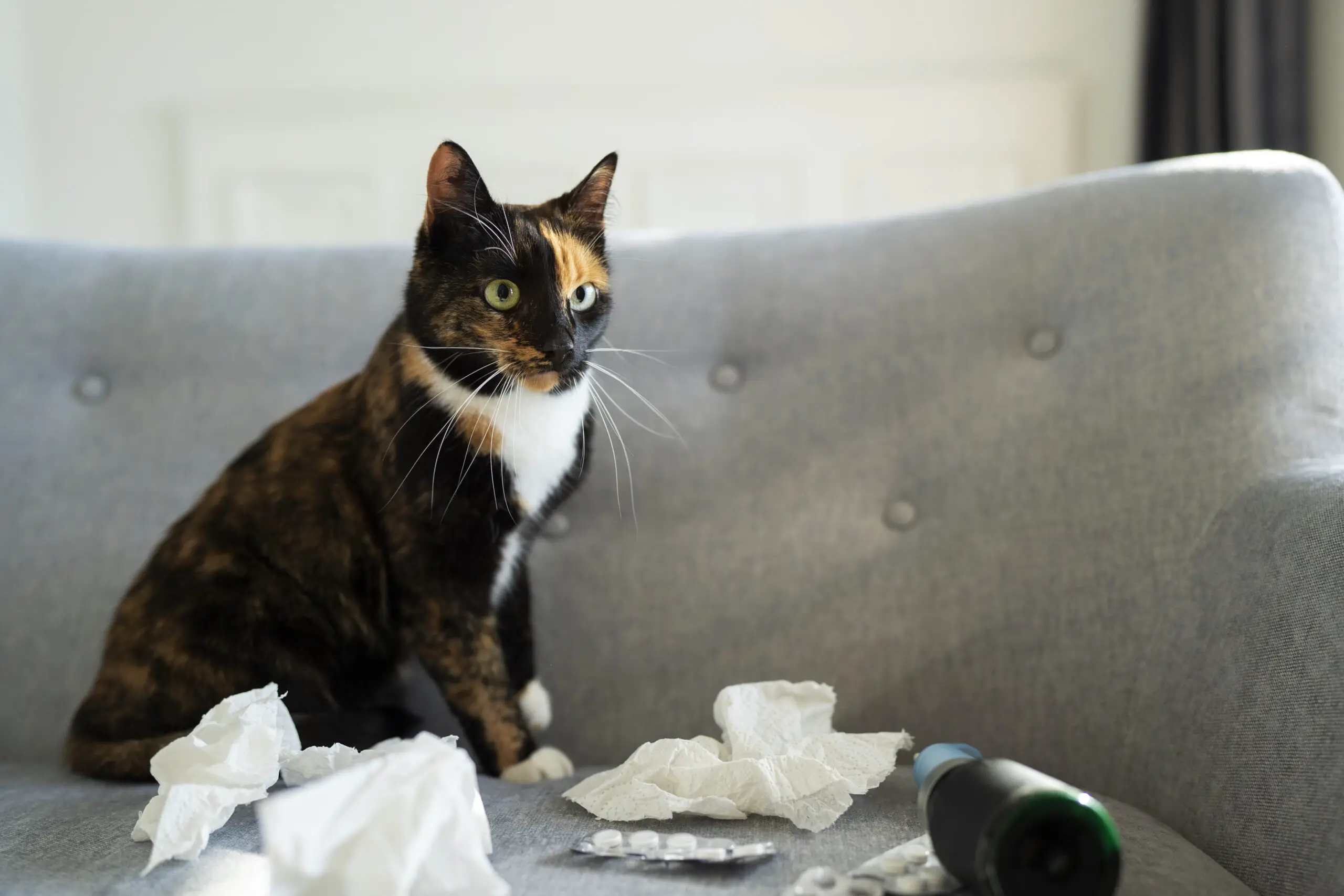
How to Treat Reverse Sneezing in Cats
Helping your cat through a reverse sneezing episode involves calming and comforting measures, while treatment typically focuses on addressing the underlying cause, if identifiable.
During an episode of reverse sneezing, it’s important to remain calm to help soothe your cat. You can gently stroke your cat’s neck to help ease their discomfort and speak to them in a soothing voice. Ensuring a calm, stress-free environment for your cat can also make a significant difference.
In terms of treatment, if the reverse sneezing is occasional and doesn’t seem to distress your cat, specific treatment may not be necessary. However, if it’s a frequent occurrence, a veterinary examination is essential to identify and treat potential underlying causes.
If an irritant is triggering the reverse sneezing, removing that irritant can help. For example, if the trigger is a specific type of litter, switching to a different litter may reduce or eliminate reverse sneezing episodes.
In the case of allergies, your vet may suggest antihistamines or a change in diet. If a more serious underlying condition is found, such as nasal mites, polyps, or a respiratory infection, the vet will recommend appropriate treatment, which may include medication or surgery.
Remember, while reverse sneezing episodes can seem scary, they’re typically not harmful. But any changes in frequency, intensity, or accompanying symptoms should prompt a visit to the vet to rule out more serious conditions and ensure your cat’s well-being.
Why Is My Cat Reverse Sneezing So Much?
When your cat is experiencing frequent reverse sneezing, it’s natural to worry and seek out the reasons behind this occurrence. An increased frequency of reverse sneezing episodes might indicate that the cause is ongoing or that your cat is frequently encountering a specific trigger.
As previously mentioned, common triggers include irritants like dust, smoke, household cleaning products, perfumes, or a sudden change in temperature or humidity. The frequency might increase if your cat has repeated exposure to these triggers.
This could happen if a new cleaning product is introduced in the house, for example, or if the weather becomes particularly dry or humid.
Allergies could be another reason for frequent reverse sneezing. If your cat has an allergy to a particular food, ingredient, or substance in its environment, the reverse sneezing may continue until the allergen is removed or the allergy is treated.
A respiratory infection, nasal mites, or nasal polyps could also result in frequent reverse sneezing. These medical conditions often require veterinary intervention to be resolved.
In any case, if your cat’s reverse sneezing becomes more frequent or severe, or if other worrying symptoms accompany the sneezing (like discharge, lethargy, loss of appetite, or difficulty breathing), it’s essential to consult with a veterinarian.
They can perform a thorough examination to identify any potential issues and guide you on the best course of treatment.
Cat Reverse Sneezing and Vomiting
While reverse sneezing on its own is usually harmless, the combination of reverse sneezing and vomiting in your cat is a cause for concern. These symptoms may indicate a more serious underlying issue that needs immediate veterinary attention.
Vomiting can be a symptom of various issues ranging from dietary changes to serious illnesses. If your cat is experiencing reverse sneezing and vomiting simultaneously or in close succession, it may suggest an issue like a respiratory infection, gastrointestinal problem, or even a foreign object lodged in the throat or nasal passages.
The ingestion of a toxic substance can also induce these symptoms. Cats are often curious creatures and may consume items that can harm them, including certain plants, foods, and chemicals found in the household.
Frequent vomiting, especially when paired with other concerning symptoms like reverse sneezing, should not be ignored. It can lead to dehydration and other health complications if left untreated.
In any case, do not attempt to diagnose your cat’s condition yourself. If your cat is reverse sneezing and vomiting, it’s crucial to get them to a veterinarian as soon as possible. The vet will be able to determine the cause and provide the appropriate treatment.
It’s always better to err on the side of caution when it comes to the health and well-being of your feline friend.
The Vet’s Perspective: Diagnosing Reverse Sneezing
From a veterinary perspective, diagnosing reverse sneezing in cats usually involves a thorough examination of the cat’s medical history, a detailed discussion with the owner about the frequency and duration of episodes, and a comprehensive physical examination.
Veterinarians would typically start by asking the owner to describe the reverse sneezing episodes. Knowing what triggers the episodes, how long they last, and whether there have been any changes in frequency or severity can provide invaluable insights into the possible cause of the reverse sneezing.
During the physical examination, the veterinarian may check the cat’s nose, mouth, throat, and airways to identify any possible obstructions, inflammation, or signs of infection.
They may also listen to the cat’s heart and lungs to rule out cardiovascular or respiratory conditions. In some cases, blood tests, x-rays, or endoscopic examinations may be recommended to further investigate the cause of the reverse sneezing.
It’s important to note that, while reverse sneezing is typically benign and self-limiting, consistent or severe reverse sneezing can sometimes be a sign of an underlying health condition that requires treatment.
Therefore, if you’re noticing your cat reverse sneezing frequently, or if the episodes are severe or distressing to your cat, it’s crucial to consult with a veterinarian. Their expert knowledge and understanding of feline health will help identify any potential issues and guide you toward the most appropriate course of action.
Reducing the Frequency of Reverse Sneezing Episodes
Managing reverse sneezing in cats is often about reducing exposure to triggers and enhancing the overall health and well-being of your feline companion. Here are some practical strategies to help decrease the frequency of reverse sneezing episodes:
- Improve Air Quality: Cats with sensitive airways may benefit from a home environment with clean, fresh air. Avoid smoking around your cat, as second-hand smoke can irritate their airways. Similarly, strong fragrances from cleaning products, perfumes, and air fresheners can also trigger reverse sneezing.
- Regular Cleaning: Regularly clean your home, including the areas your cat frequents, to minimize dust, mold spores, and other potential irritants. Be sure to use pet-safe cleaning products to avoid causing further irritation.
- Pollen Control: If your cat seems to have more reverse sneezing episodes during certain seasons, they might be sensitive to pollen. Keep windows closed during high pollen times, and consider using air purifiers to help reduce indoor pollen levels.
- Proper Hydration: Keeping your cat well-hydrated can help maintain moist nasal passages and throat, potentially reducing the frequency of reverse sneezing episodes.
- Healthy Weight: Maintaining a healthy weight in cats can help prevent breathing issues and reduce the likelihood of reverse sneezing.
- Regular Vet Check-ups: Regular veterinary check-ups can help identify any underlying health issues early. They can also provide an opportunity to discuss any concerns about your cat’s reverse sneezing and whether any further investigation or treatment is necessary.
Remember, reverse sneezing is usually a harmless event and does not typically require treatment. However, if your cat’s reverse sneezing becomes more frequent, and severe, or is accompanied by other symptoms such as lethargy, loss of appetite, or vomiting, it’s essential to seek veterinary attention.
It could be a sign of a more serious underlying condition that needs immediate attention.
How to Comfort a Cat During a Reverse Sneezing Episode
If you’ve ever witnessed your cat in the middle of a reverse sneezing episode, you may feel quite helpless. The good news is there are ways to provide comfort and possibly even shorten the duration of the sneezing fit. Here’s what you can do:
- Stay Calm: Your reaction can influence your cat’s emotional state. Stay calm and composed; your serene demeanor can help your cat feel safer and less anxious during a reverse sneezing episode.
- Soothing Strokes: Gently stroking your cat’s throat may help ease the spasms. It can stimulate swallowing which can stop the reverse sneezing.
- Speak Softly: Speak to your cat in a soft, comforting voice. Just hearing your voice can provide reassurance.
- Limit Irritants: If you notice that a specific irritant like smoke or a strong smell precedes an episode, try to remove the cat from the source or eliminate the trigger if possible.
- Try Nose Plugs: This isn’t suitable for all cats, but gently plugging your cat’s nostrils for a second can force them to swallow and may stop the episode. Always be gentle and never cause discomfort to your cat.
- Provide Fresh Air: If feasible and safe, let your cat go outside for fresh air or open a window to let fresh air in. It could potentially help in stopping the episode.
Remember, while reverse sneezing in cats can sound alarming, it’s generally not a harmful condition. But as a pet owner, it’s crucial to monitor any changes in the frequency, duration, or intensity of these episodes.
If the reverse sneezing is persistent, worsening, or associated with other symptoms, don’t hesitate to consult your veterinarian.
Knowing When It’s More than Reverse Sneezing
While reverse sneezing in cats is generally harmless, it’s important to understand when the condition warrants a trip to the vet. The following situations may indicate a more serious underlying issue:
- Increased Frequency: If your cat’s reverse sneezing episodes become more frequent or last longer than usual, this could suggest a more severe problem like an infection or allergy.
- Other Symptoms: Look out for other signs of distress or illness in your cat. These could include loss of appetite, lethargy, weight loss, changes in behavior, nasal discharge, or difficulty breathing.
- Change in Voice or Loss of Voice: Any changes in your cat’s meow or complete loss of voice can suggest a problem with their throat or respiratory tract.
- Difficulty Eating or Swallowing: If your cat appears to have trouble eating or swallowing, it could indicate a throat or esophageal issue that needs medical attention.
- Ineffectiveness of Home Remedies: If soothing strokes, fresh air, or removing potential irritants do not reduce the frequency or severity of your cat’s reverse sneezing episodes, it’s time to consult a vet.
- Chronic Vomiting or Gagging: Regular vomiting or gagging, particularly if it’s associated with reverse sneezing, is a serious symptom that needs immediate veterinary attention.
It’s crucial to pay attention to your cat’s behavior and symptoms. When in doubt, it’s always better to consult with a veterinarian. Remember, as a pet owner, you’re the first line of defense in recognizing any potential health problems in your cat.
Trust your instincts and don’t hesitate to seek professional help if you’re concerned about your cat’s well-being.
Frequently Asked Questions
What does reverse sneezing in cats mean?
Reverse sneezing in cats is a common respiratory event where the cat will make rapid and long inhalations, stand still, and extend its head and neck. It’s often caused by irritation to the throat, pharynx, or laryngeal area, but it’s usually harmless and doesn’t require treatment.
Is reverse sneezing bad for cats?
Generally, reverse sneezing is not harmful to cats and is a fairly common occurrence. It can look and sound worrying, but it’s usually over within a few seconds to a minute. However, if reverse sneezing becomes frequent, it may indicate an underlying health issue, and a vet should be consulted.
When should I worry about reverse sneezing?
While occasional reverse sneezing is typically no cause for concern, frequent episodes, particularly those accompanied by other symptoms such as weight loss, loss of appetite, nasal discharge, or changes in voice, should warrant a visit to the vet. If you notice the episodes are becoming more frequent or lasting longer than usual, it’s best to seek professional help.
How do you treat reverse sneezing in cats?
Most of the time, reverse sneezing in cats requires no treatment. If the episode doesn’t end quickly or the cat seems distressed, gently stroke its neck or cover its nostrils briefly to encourage swallowing. If an allergen is causing the episodes, identify and remove it if possible. However, if the reverse sneezing is frequent and persistent, it’s important to consult with a veterinarian.
What can cause a sudden onset of reverse sneezing in cats?
The sudden onset of reverse sneezing can be triggered by various factors. These include exposure to irritants like dust or strong odors, excitement, a sudden change in temperature, or even an allergic reaction. In some cases, it might be due to an underlying health issue such as a respiratory infection or a foreign object lodged in the nasal passage.
Are kittens prone to reverse sneezing?
Reverse sneezing can occur in cats of any age, including kittens. If you notice your kitten reverse sneezing frequently or exhibiting any other worrying symptoms, it’s always a good idea to consult with a vet. It’s essential to ensure the kitten is not suffering from any underlying health conditions that require treatment.
Final Thoughts
Knowledge is power, and understanding reverse sneezing in cats equips you with the ability to make informed decisions about your feline friend’s health. While reverse sneezing can appear concerning, it’s typically a harmless event that can happen to any cat, regardless of age or breed.
Nevertheless, being aware of the symptoms, potential triggers, and relevant treatments is crucial. As a cat owner, you should know how to differentiate between normal sneezing, reverse sneezing, and signs of potential health issues. An increase in frequency, changes in behavior, or accompanying symptoms such as vomiting should be promptly addressed with a professional vet.
The importance of regular vet check-ups can’t be overstated, as they can help detect any potential issues early and ensure your cat is healthy and happy. Remember, frequent episodes of reverse sneezing could indicate underlying issues such as allergies, infections, or even foreign bodies lodged in your cat’s respiratory tract.
In conclusion, while reverse sneezing in cats is usually benign, vigilance is key to ensure it’s not a symptom of a more significant health concern. Your cat depends on you for its well-being, so stay informed, remain watchful, and provide the best care possible for your feline companion.
References
- Lake City Animal Hospital. (n.d.). Reverse Sneezing in Cats. Retrieved July 1, 2023.
- Riverlandings Animal Clinic. (n.d.). Reverse Sneezing in Cats. Retrieved July 1, 2023.
- WebMD. (n.d.). What is Reverse Sneezing in Cats? Retrieved July 1, 2023.
- PetHelpful. (n.d.). Reverse Sneezing in Cats: Causes and Treatment. Retrieved July 1, 2023.

